The Benefits of the Ear to Instrument Connection
I recently watched a video performance by the amazing classical pianist Yuja Chang. I’ve seen her memorizing motion and heard her virtuosic playing before, but something hit me after seeing
Categories:
Categories:
There is a lot of controversy surrounding the idea of playing tunes in alternative keys as a method for learning to improvise. I am on an email distribution involving dozens of well-known jazz masters and the other day we all received an email written by one of those musicians who is also a top jazz college educator in which he brought to light three common teaching and practicing techniques that, as he wrote, has questioned for years .
I agreed with his first one which is practicing familiar jazz phrases, usually in all keys, organized like exercises. I have written much about the hazard of memorizing licks and phrases in order to quilt them into an “improvisation”. I disagree with his argument against the value of transcribing solos since I have seen the tremendous value transcribing has provided me and a host of others.
But the point I wish to examine more closely is his claim against “transposing songs in all keys”.
Let me be clear. I am not in favor of writing out tunes in all keys nor am I in favor of memorizing tunes in all keys. Perhaps this musician would agree with my specific use case for playing in all keys since he doesn’t write about it, but I believe there is tremendous value in playing tunes in all keys as an ear strengthening exercise. Let me explain…
Do you know the tune “All the Things You Are”? Can you play the melody by memory all the way through with the rhythm section? Can you play the melody with equal ease a cappella? If so, great. Are you able to play it because you hear the tune or because you’ve spent years memorizing the feel of the keys comprising the melody? Has your brain reinforced those neural connections so well that the melody in Ab falls off the instrument?
But, start the melody on C. Do you hear the next note? I’m not asking if you can calculate a perfect fourth from C, but if your mind takes your fingers to F without thinking. Because you hear it. How far can you get through the tune starting on C?
Why is this exercise important? Because it assesses your relative pitch and the connection between your musical mind and your instrument. You’ll probably never have a practical need to play All the Things in C unless of course Sonny Still sits in with you.
The value in starting on random notes to play through tunes is precisely the antidote to memorized patterns and licks. It shifts your reliance on muscle memory to hearing the music from inside. And this is exactly the point of my Jazz Patterns for Ear book. It allows you to hear a simple note sequence and then play that simple sequence on a random note played for you.
Play Autumn Leaves in the standard key. Now play it starting on concert A. Again, resist the temptation to calculate your way through it. Instead, hear it in your head and play what you hear. An intermediate step is to sing it starting on A. Play A on your instrument and sing the melody. When you sing that last note, play A on your instrument. Did you drift from the key or land squarely on C? That is also a test of your relative pitch sense and your true hearing of the tune.
Take a tune you are trying to learn. Memorize the tune in the original key. Start on a note a fourth up or down. Sing first then play. If you get stuck singing, you don’t yet know the tune. Keep practicing in the original key until you hear the tune well enough to play it without thinking on your instrument and singing. NOW, start on a different note.
You will be amazed by how fluently you will begin to improvise over the tune in the original key after being able to pick a note and play through the tune in that new key. Next, you’ll hear that there are more difficult keys for you than others. Starting All the Things You Are on B takes you even further away from the comfort zone of your muscle memory. Now we are touching on the subject of your ease with more difficult keys. If you own Band in a Box or the iReal book, create the changes in the key of B. But again, resist calculating your way through the melody. Spend a couple of choruses just listening to the changes. Sing a solo over those changes in order to hear yourself creating melodies without the resistance of your instrument.
These are all valuable activities that will get you closer to knowing a tune. And you got there by playing the tune in all keys. You have successfully broken away from muscle memory reliance and instead, are being guided by your inner musician. And that musician is the true master improviser.

Trombonist, author, marketer, & tech guy
Share this post…

I recently watched a video performance by the amazing classical pianist Yuja Chang. I’ve seen her memorizing motion and heard her virtuosic playing before, but something hit me after seeing

I have created a AI chatbot called Jazz Master Chat that draws from 75 hours of interviews from my Jazz Master Summit event a couple of years ago. I interviewed

What is jazz improvisation? Let’s first define what I mean by jazz improvisation. Jazz improvisation is a spontaneous conversation, but instead of words, we use notes. Look at two possible

My recently turned 18 year old son is a passionate photographer He 8217 s got himself a little business

A couple weeks ago I sent Richie Beirach a YouTube clip from the movie Whiplash as a bit of

I originally meant to write this as a reply to a comment Richie Beirach wrote on my blog But

Tools for helping musicians at all levels learn about jazz and play to their full capability.
Web design and marketing by:
Michael Lake @JazzDigitalMarketing.com
This is just a fake book example for the type of website I can build for you. Just trying to use a little humor here!